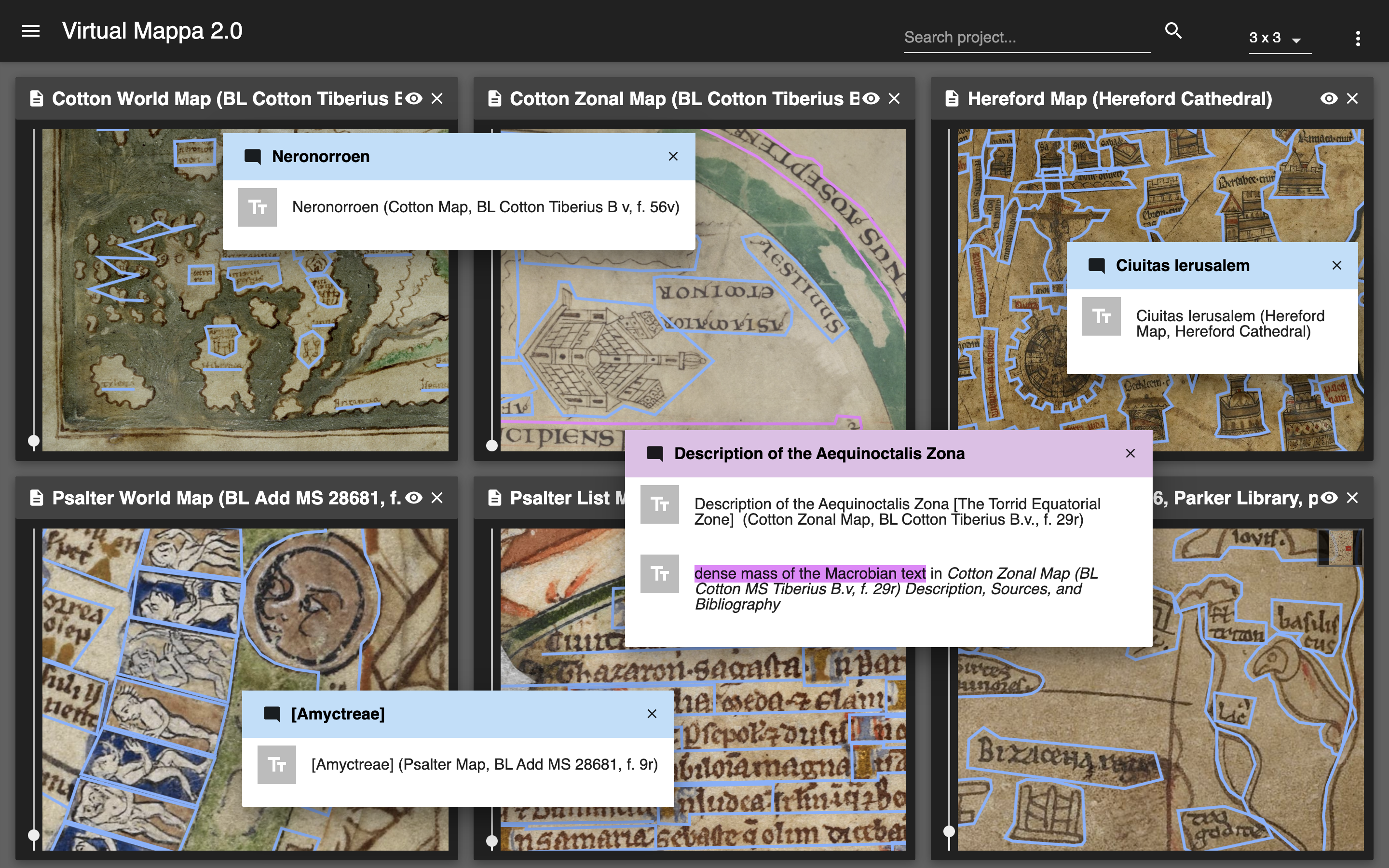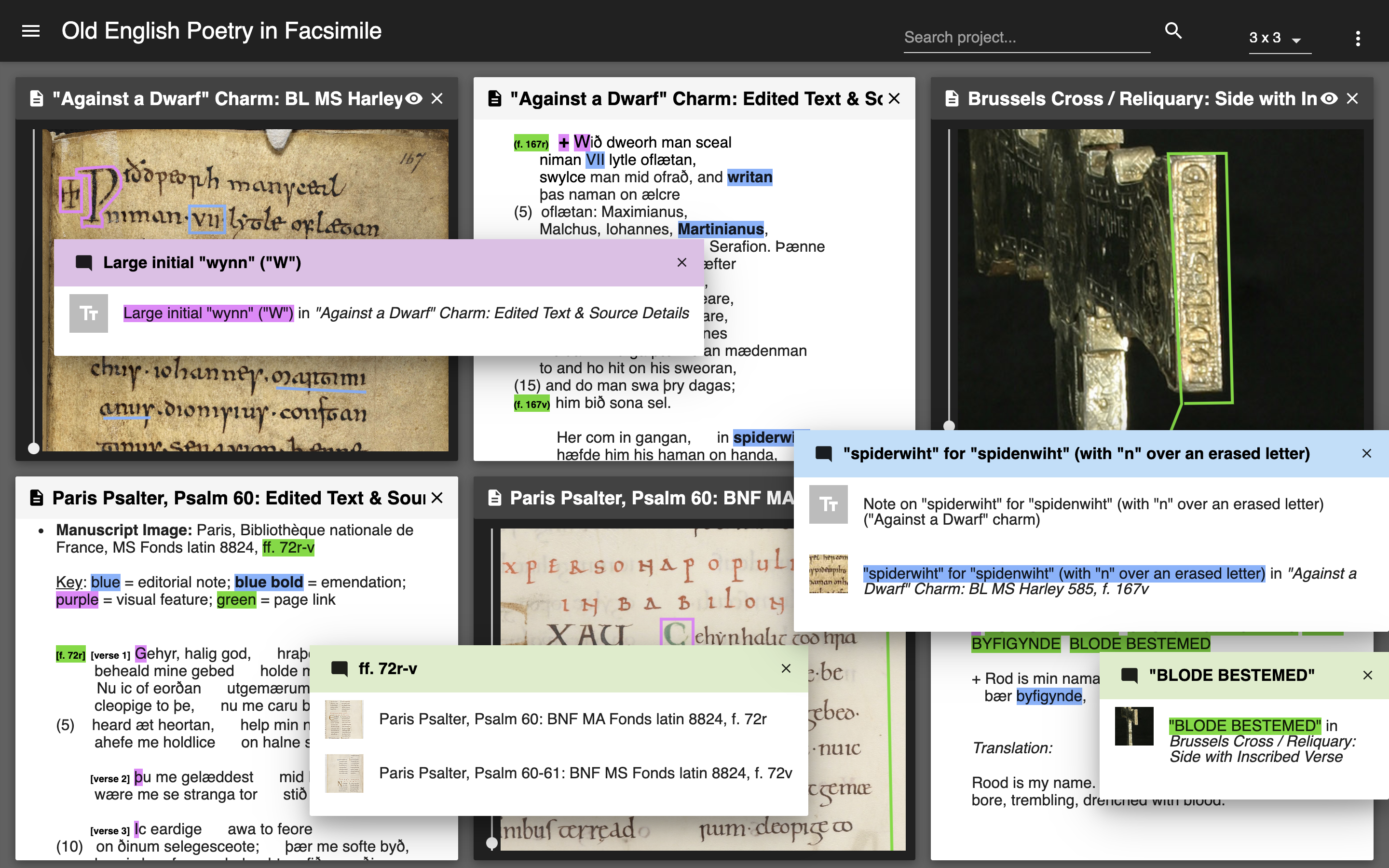
Written by Martin Foys and Maxwell Gray
What is Digital Mappa?
Digital Mappa 2.0 (DM) is an open-source, collaborative digital humanities platform for public or private workspaces, projects and scholarly publications. The platform software can be installed on a local or cloud server, and collaborators can highlight, annotate and link collections of digital texts and local, online and/or IIIF images through an array of easy to use tools. The platform development is directed by UW-Madison Professor of English Martin Foys, and there is a UW instance of it run under the UW Center for the History of Print and Digital Culture.
What Can DM Do For You?
The premise of DM is simple: if you have a collection of digital images and texts, then you should be able to develop a project where you can identify specific moments on these images and texts, annotate them as much as you want, link them together, generate searchable text content, collaborate with your colleagues, and publish your work online at a durable URL for others to see and share. DM 2.0 gives you the environment to make this happen, and users can create basic or sophisticated individual or collaborative projects with no coding ability whatsoever. Users can add images to DM projects locally or remotely through remote urls or IIIF image protocols. A search feature compiles all annotation text in a project into a searchable resource, and projects can be set to private, group or public access.
DM 2.0 was initially developed for deployment on the Heroku cloud-server platform, where installation and administration is straightforward for server administrators, after which developing individual projects requires no specific IT expertise. DM is now also available for local server installation and administration.
Using Digital Mappa
DM includes three simple tools that allow you to build and develop your own digital humanities projects and publications, of thousands of annotations and connections:
- Markup moments on image and text documents with highlights you can annotate and link together. Highlight discrete moments on images and texts with dots, lines, circles, rectangles, other polygons, text tags, and multiple color options.
- Each highlight and document can have any number of annotations or links to other highlights attached to it, and annotations themselves can host additional annotation layers.
- Then you can create links between individual highlights and entire documents, and your links are always bi-directional, so you and other viewers can travel back and forth between highlights.
To begin developing individual projects on DM, you need to have access to an already existing instance of the platform, or install its software on your own server. Installation requires server administration expertise, but afterward developing individual projects requires no specific technical expertise beyond pointing, clicking and typing. The Digital Mappa website contains a complete set of video help guides on each DM feature, plus tips and tricks.

What People Are Already Doing?
Students and faculty on campus can have access to UW’s instance of DM, and are already using DM 2.0 to create digital editions of medieval manuscripts, maps of the world, and print and archival documents. You can learn more about these and other projects on campus at the DM resource page on the Center for the History of Print and Digital Culture website. You can also follow DM’s Twitter feed for overviews of projects and announcements of new DM features.
Getting Started
If you have questions about the platform and/or would like to get started using DM on campus, then you can find the project’s contact information on the project website where you can also find our social media. To learn more you can also see showcase projects and help guides on the website.
Futures Plans
Over the summer of 2020, with funding from UW, work will begin on version DM 2.1, which will refine current features, and add batch processing and the ability to layer multiple images under the same set of annotations. For the next major cycle of DM 3.0 development (2021-2023), funding is being sought to develop granular citationality for individual annotations and highlights, so that any moment in a public project can be directly linked from citations in digitally published scholarship along with other features such as enhanced search features, support for sound and video objects, data tracking and project seeding.
Special Thanks
DM has been made possible by the generous support of the National Endowment for the Humanities, the Andrew W. Mellon Foundation, the University of Wisconsin-Madison, the Wisconsin Alumni Research Foundation, the Council on Library and Information Resources, the Schoenberg Institute for Manuscript Studies, the British Library, Drew University, UW-Madison’s Center for the History of Print and Digital Culture, and UW-Madison’s English Department. The project is dedicated to every institution that is making its digital holdings freely available to all—the next generation of Humanities scholarship cannot happen without you.